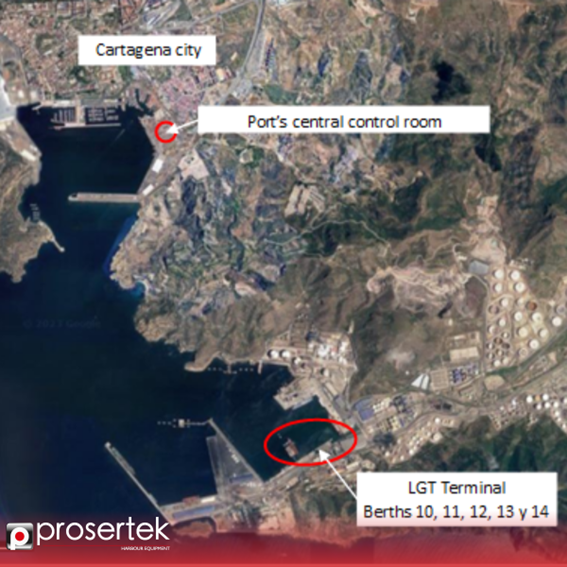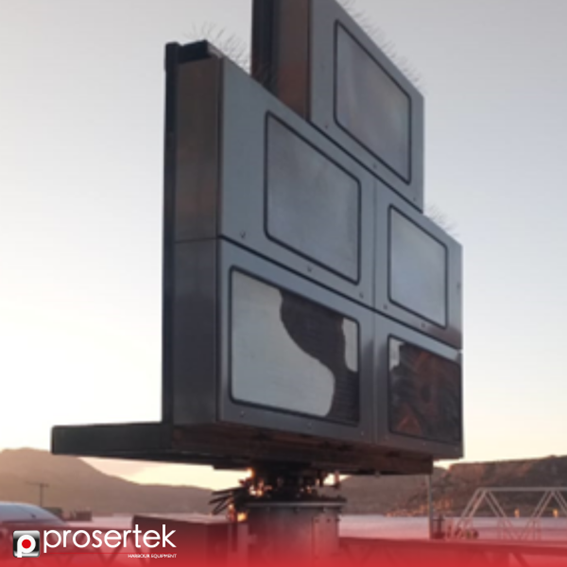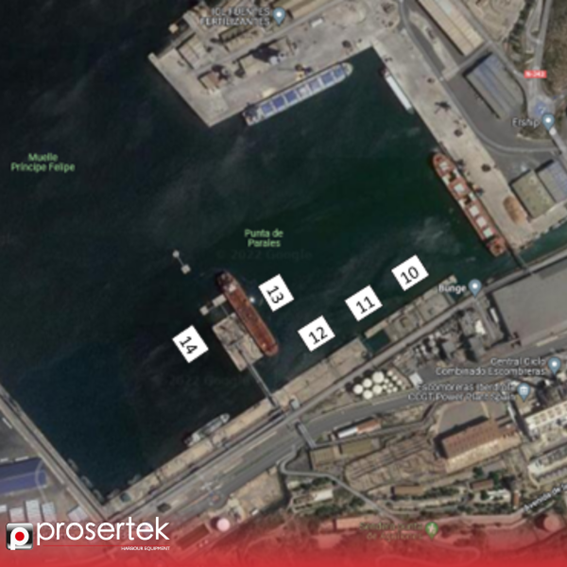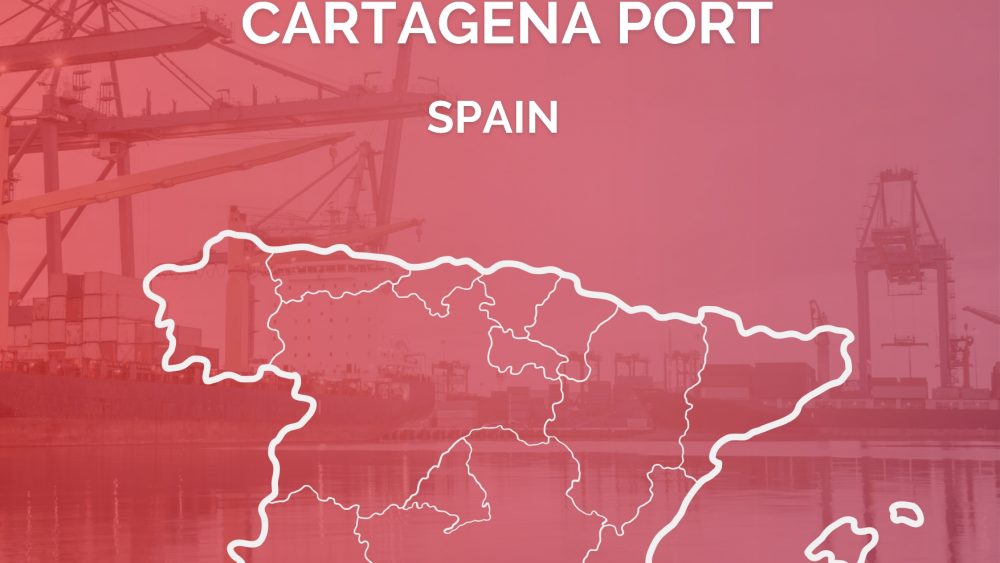Cartagena is a port city and naval base, located in the region of Murcia, in southeastern Spain. It is the fourth port in Spain with the highest level of cargo traffic. Prosertek is proud to participate in the LGT terminal renovation project: with replacement of the quick release hooks (QRH), installation of berthing aid systems (BAS) and new fendering systems.
In its intention to modernize and increase the security of berths 10, 11, 12, 12, 13 and 14, and after several meetings with the concessionary companies, the scope of the project was defined:
- Replacement of Fender Systems
- Replacement of the existing Quick Release Hook systems to accommodate the demands of ever larger vessels, and adding additional functionalities, like Mooring Loads Monitoring
- Installation of Berthing Aid System on each berth
- In addition, remote communication with the Port’s central control room located several kilometers away.

What are fender systems?
Marine fender systems prevent damage in the interaction between vessels and the quay structure, as they can absorb the kinetic energy of vessels and transform it into reaction forces supported by the quay structure and vessel hull.
There are various types of marine fenders, including rubber, pneumatic and foam fenders, each designed for different environments and operational requirements.
What are Quick Release Hooks?
Quick release systems are safety devices installed on maritime terminals, designed to allow quick and safe release of moorings or anchorages in emergency situations.
The system allows a quick mooring to the quay or berth to be made safely by providing solid attachment points for ship mooring lines. The quick release hook set is complemented by the Dockmoor-RR, an automatic release system developed by Prosertek that allows remote or local release of the hooks.

What are BAS?
The berthing aid system is an advanced technology designed to assist in the process of berthing vessels in ports and marinas. It uses sensors, cameras and software to provide accurate information on the position and movement of the vessel, allowing to monitor berthing and mooring operations in marine terminals, and all the factors involved in them, providing information that allows to improve the operation and ensure a safe berthing of the vessel, facilitating safe and effective operations.
These systems may include technologies such as GPS, radar, and laser systems to measure distances and speeds, facilitating the maneuvering of the vessel to its final berthing position, minimizing the risk of collision or damage to port infrastructure and the vessels themselves.

Why Prosertek?
There are several reasons why Prosertek was the company chosen to carry out the project:
- Prosertek stands out for its unique ability to design and manufacture in-house all the equipment needed for its projects, ensuring optimal integration and functionality.
- With a global experience of more than 30 years in executing similar projects, the company brings a depth of knowledge and technical expertise that is second to none.
- Its proven after-sales service guarantees customers continuous and efficient post-installation support, reinforcing long-term customer confidence and satisfaction.
Characteristics of the project
It can be said that the project, among the different berths, presents all the practical issues that can be found today:

- Berth 10 – 11: two individual berths, which can be used as a single berth for large vessels.
- Berth 12: quick escape hook physically installed at berth 12, but corresponds to berths 10 – 11.
- Berths 13 and 14: need for underwater communications with quick escape hooks and sensors installed on common dolphins.
- Berths 13 and 14: multiple quick release hook stations (double, quadruple) sharing different berths.
- Possibility of release of quick release hooks locally (manual, electrical), from the LGT terminal control room and from the central control room of the distant port.
- Monitoring of berthing processes, monitoring of environmental data (air, sea), monitoring of quick release hook loads from the LGT terminal itself and/or remotely from the central control room of the distant port.
- Fiber optic communication between the control room of the LGT terminal and the central control room of the distant port.
- And all known standard features of Prosertek’s quick release hooks, berthing aid systems (BAS) and fendering systems.
Prosertek, S.L. is proud to announce that the Project has been completed on schedule, with the requested quality and to the full satisfaction of the Port Authority of Cartagena.



Comments are closed.